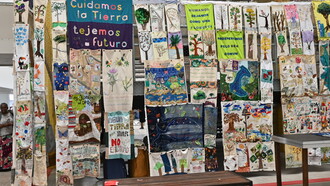You might think it's a little late for Los Angeles.
There were policy errors: In 1988, the elected insurance commissioner was given the power to stop insurance firms from raising prices. Insurers were forced to use historical wildfire data and could not adjust premiums to the added risks from a changing climate. Discounting by 20% insurance premiums encouraged more Californians to live in fire-prone areas. Also, the state acted as the public insurer of last resort (Fair Plan) with an estimated 460 billion in home value. City zoning laws made urban housing expensive and helped the exodus to riskier areas.1 Los Angeles requires new homes to be fire-resistant, but most homes are not new, pre-date the modern building codes, and unfortunately characterize the old single-family homes that sprawl out into the foothills.
There were earlier smaller fires, such as the Bobcat fire in September of 2021, the Post and the Bridge fires in 2024. According to a national analysis of hazards, exposure, and vulnerability, LA is one of the major areas of risk. Last October, Dr. Marshall Shepard of the University of Georgia was explaining his analysis, stating, “South Florida parts of the mouth of the Mississippi near New Orleans and Los Angeles County, they're screaming at us for help”2.
What can be done now for adaptation in LA is multifaceted. For the forests, the indications include different kinds of fire breaks, more underbrush cleaning, more reserves for water, upgrading the hydraulic network in light of the new housing situation, optimizing the organization of firefighters, and probably hiring more. The firemen of Los Angeles have shown great competence in fighting the multiple fires and will undoubtedly do a good job of preparing for future fires, provided they have adequate funding.
Another key aspect is the type of new housing and refurbishment of the buildings in the burnt areas. New housing should be very energy-efficient and heat-resistant, probably in brick or cement. Old houses must be hardened against fire, some rebuilt. Undoubtedly, the housing cost will be much higher, perhaps double, but this represents the cost of living in a dangerous zone. Not all of the previous minority population living there will be able to afford the new cost of single homes, and they may consider brick-cement apartment buildings, also as a way of keeping their community together.
The last aspect involves Los Angeles County in general. The considerations of better building codes are critical. There are also different aspects to consider, such as emergency cooling and water spots for the young, old, and poor. Street pavements and rooftops should reflect more light and be painted accordingly. Increasing the green spaces and trees is essential. The health benefits of additional green space are incredible. A recent review and meta-analysis of 143 studies in 20 countries shows that living near green space is associated with multiple health benefits, including type II diabetes, cardiovascular mortality, diastolic blood pressure, salivary cortisol, heart rate, heart rate variability (HRV), HDL cholesterol, incidence of stroke, hypertension, dyslipidemia, asthma, and coronary heart disease3. Public spaces with exercise facilities are improving the health of nearby residents. Trees help diminish atmospheric pollutants, lessen the urban heat island effect, and alleviate stress and sleep disturbance by providing a buffer against traffic noise.
I was in NYC during Hurricane Sandy and appreciate all the emergency efforts, living near a dangerous hanging crane on 56th Street. Subsequently, there was the substantial rebuilding and rehabilitating of housing, assisting displaced tenants, providing aid to businesses, and bolstering coastal defenses, spending $4.2 billion from the Community Development Block Grant.
Some would classify this as “climate-proofing” adaptation compared to the more inclusive transformative adaptation that includes deliberately and fundamentally changing systems to achieve more just and equitable adaptation outcomes4.
If a regenerative economy is what climate change would require, but the extractive economy is what we have, the degree of climate adaptation and of inclusiveness will emerge where it is politically possible. In any case, Los Angeles will have to update its planning efforts in light of the recent fires. Los Angeles desires to hold the 2028 Olympics.
The good news is that adaptation is often bipartisan. We will always have our differences, and at times, they can become self-defeating, but we usually feel empathy for those who have experienced these disasters. We see that it is better to be prepared.
In addition, gaps between the achieved and ideal levels of adaptation do not appear to show political differences. The difference relates more to budget constraints and a very short planning horizon5.
Cities do not have to experience a disaster to adapt well. London is famous for the Thames Barrier that holds back storm surges and high tides for 1.3 million people. It was opened in 1982 and will be sufficient until 2070.
I have chosen two US cities, Phoenix and San Diego, as case studies among the many given in the excellent toolkit climate site. The plans and activities of adaptation are shown in some detail to emphasize the diversity and complexity involved.
“The City of Phoenix is engaged in significant climate adaptation:
Create an inclusive and equitable city, prioritizing investments in previously underserved communities, proactively seeking community input on all major climate policy and related budget decisions, and embedding equity in all climate actions.
Lead by example by transitioning city operations electrical use to carbon neutral by 2030 through energy use reduction and implementation of local and utility-scale solar projects.
Reduce community carbon emissions from buildings, transportation, and waste to move toward becoming a carbon-neutral city by 2050.
Support increased energy efficiency, renewable energy, and new electric vehicle charging requirements in building codes to achieve carbon-neutral buildings citywide by 2050 with all new construction being net-positive in both energy and materials by 2050.
Attract businesses that turn waste into resources and create a thriving resource innovation campus by 2030 to put the city on the path to zero waste by 2050.
Support and prepare for 280,000 electric vehicles in the city by 2030 and rapidly expand bus and high-capacity transit (light rail and bus rapid transit) to achieve carbon-neutral transportation by 2050.
Support new land use and development tools, such as the Walkable Urban Code, to prioritize people arriving by walking, biking, or using transit, thereby reducing dependence on gasoline-fueled, single-occupancy vehicles, particularly within and connecting to transit-oriented development districts, village cores, and centers by the year 2050.
Become a top tier Heat-Ready City by 2025—implementing the Tree and Shade Master Plan by 2030 and building a network of 200 “cool corridors” by 2050.
Continue to lead internationally in water stewardship—providing a clean and reliable 100-year water supply.
Create and maintain a healthy, sustainable, equitable, and thriving local food system with healthy, affordable, and culturally appropriate food for all Phoenix residents by 2050.
Significantly improve air quality in the region to meet federal air quality standards. Companies in Phoenix are establishing climate goals and developing the technologies that will power a low-carbon, zero-waste economy” 6.
San Diego has emphasized inclusiveness in its climate plan.
“Climate Resilient SD is a comprehensive climate adaptation and resilience plan that addresses the four primary climate change-related hazards for the city: extreme heat, extreme rainfall or drought, wildfires, and sea level rise. The level of impact these climate change hazards will have on the city’s people, assets, and resources was assessed through a detailed citywide Climate Change Hazard Vulnerability Assessment (Appendix B). This assessment considered exposure to the hazard, sensitivity to the hazard, and to what extent the asset or resource could adapt to the hazard. By identifying its more vulnerable communities, assets, and resources, the city can implement adaptation strategies where they are most needed and use its resources most effectively. Adaptation strategies can lessen vulnerability by reducing exposure or sensitivity to climate change hazards or by increasing their adaptive capacity, or ability to respond to the climate change hazard7.
In developing the Plan of Climate Resilient San Diego, the following options were considered:
“Account for projected changes in precipitation and sea level rise in water and water infrastructure planning.
Conduct regular brush management in high wildfire risk zones.
Conduct site assessments at local government facilities and ensure effective management of vegetation, defensible space, and hardening of assets as feasible for wildfire preparedness.
Create or update a trails master plan to account for climate change impacts such as increased erosion due to precipitation or sea level rise.
Develop an ecosystem fire recovery master plan to address revegetation and post-fire treatments for open space and community parks. The plan could outline implementation actions for protecting and improving ecosystem health.
Develop and regularly update a coastal erosion assessment to track conditions of coastline bluffs, beaches, access stairs, ramps, outfalls, seawalls, or other related infrastructure.
Expand and amplify wayfinding to help the public evacuate during wildfires.
Identify and implement flood protection measures for critical infrastructure. Consider the use of levees or earthen dikes.
Improve stormwater infrastructure resilience.
Increase water infrastructure diversion to reduce the likelihood of sanitary sewer overflow.
Integrate projected increases in wildfire frequency and intensity into watershed management and planning, dam and raw water reservoir operations, and dam emergency planning.
Maximize the planning and implementation of green infrastructure at the watershed scale and site-specific locations. Green infrastructure helps manage stormwater on site, can improve water quality, can help protect coastal areas, and offers cooling benefits when it is hot outside.
Promote the reuse of stormwater by implementing capture and reuse technologies in county and municipal operations, where feasible.
Promote water conservation and water reuse in local businesses and industry. Increasing water use efficiency can prevent or alleviate drought impacts.
Promote water conservation through updates to municipal irrigation systems.
Protect mechanical, electrical, and other key operational equipment from flooding at critical facilities through facility improvements or adaptive action.
Provide cooling systems for municipal and county assets and equipment sensitive to overheating.
Replace or rehabilitate water and wastewater pipes to maintain a state of good repair, minimize breaks, and ensure structural integrity in the face of climate change hazards such as flooding.
To prepare for droughts, diversify the community's water supply sources and reduce dependence on imported water.” 7
Let us practice adaptation.
In a responsible world, we would achieve more of this needed adaptation by reducing subsidies to oil and gas companies that helped create climate warming in the first place.
References
1 Grey, M.N., (2025), How Well-Intentioned Policies Fueled L.A. Fires, January, The Atlantic.
2 Shepard, M. (2024). What areas in the US are most vulnerable. YouTube.
3 Twohig-Bennett, C., Jones A. (2018), The health benefits of the great outdoors: A systematic review and meta-analysis of greenspace exposure and health outcomes, Environmental Research, Volume 166, Pages 628-637.
4 Shi, L., & Moser, S. (2021). Transformative climate adaptation in the United States: Trends and prospects. Science.
5 Lu, S., & Nakamura, A. (2023). Measuring cities’ climate adaptation. Yale School of Management, Yale Education.
6 U.S. Climate Resilience Toolkit. (n.d.). Phoenix, AZ climate action plan.
7 U.S. Climate Resilience Toolkit. (n.d.). Climate resilient San Diego.















